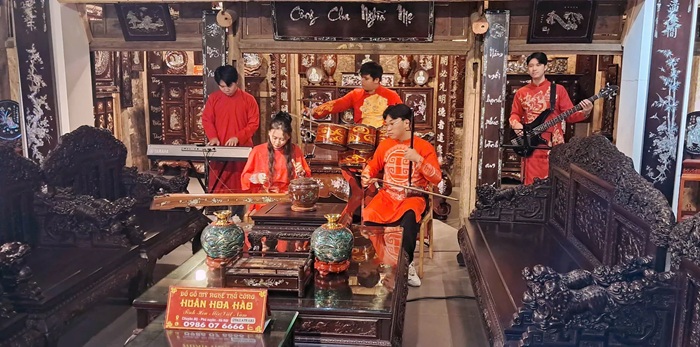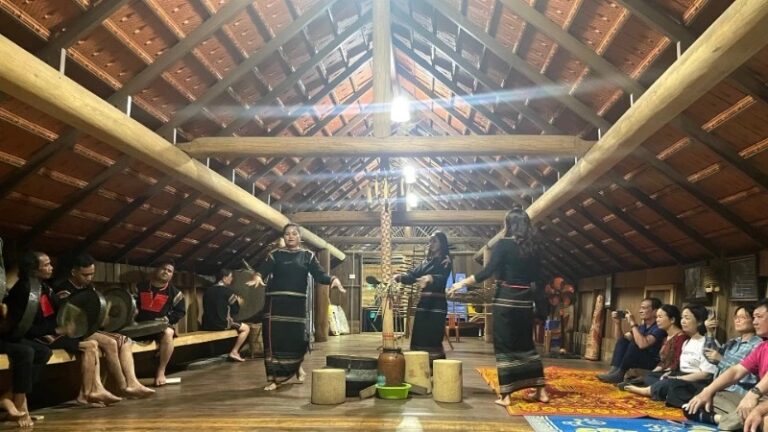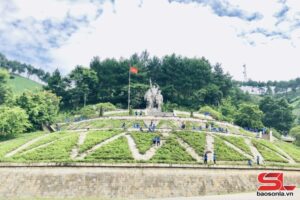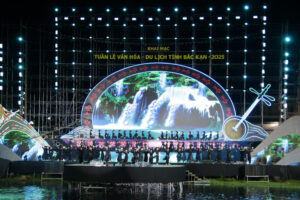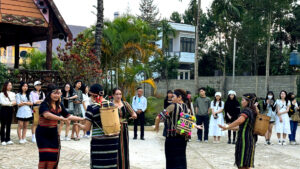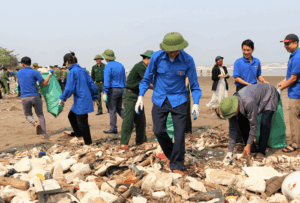From afar, it looks like a giant tortoise swimming in the sea, and locals appropriately call it the Tortoise Island - an attractive ecotourism destination to many visitors once coming to the Mekong Delta province of Kien Giang.
It takes about an hour on an express boat from the Rach Gia Port to get to Tre Island in the Mekong Delta province of Kien Giang.

With its mountains, rocky beaches and coves, the island’s rugged and wild beauty is eye-catching by itself, but it also offers places of cultural interest that add to its attraction.
To discover the island fully, hiring a motorbike or a bicycle to ride along the 12-kilometer long road that circles it is the best option. The fresh and cool air from the sea, the wild flowers growing wildly on the mountains and some scenic spots make the ride a highly enjoyable activity.
Around 15 minutes of riding our bicycles clockwise from the wharf, we arrived at the Ong Nam Hai Temple, which is dedicated to a five-ton whale that beached on the island in 2006.
In Vietnam's fishing culture, whales are considered sacred. Legend has it that whales have saved the lives of many fishermen by pushing their boats through rough seas.
Whenever whales arrive on land, dead or alive, local fishermen believe they bring luck and safety at sea. When they see a dead whale, they pull the carcass ashore and hold a burial ceremony. Several years later, they exhume the skeleton and enshrine it in a temple.
From the Ong Nam Hai Temple, we continued to go along the road which formed a unique promenade with the sea on one side and a mountain on the other. Soon, we reached the Ha Ba (Sea God) Tail, also known as Dua Beach. The transparent water tempts you to swim, and both tourists and locals love to catch oysters, or do some fishing. We didn’t miss the opportunity to take some spectacular pictures.
We then went to the Chen (Bowl) Beach, the most famous scenic spot on the island. Along the shore for about two kilometers, numerous large and small rocks dot the seascape. During high tide, most of them are submerged, and when the waters recede, they reappear like so many overturned bowls.
Sitting on these upturned bowls after swimming, we watched locals’ fishing boats bob about in the distance as well as the spumes left from the express boats that came in and left the island. Not far from us, some relatively flat-bottomed “bowls” formed ideal perches for some visitors to try their luck at fishing.
There are only two families living on Chen Beach. They were willing to let us hire necessary utensils to cook the seafood that we had bought from the small market near the wharf. You can also bring your own utensils to the beach.
Having a self-cooked meal on the beach was a pleasant experience that we are going to remember for a long, long time.
Our final destination on Tre Island was Dong Dua, a small bay where coconut palms reach out to the sun along the coast. Apart from swimming at the rocky beach here, local guides accompanied us as we attempted to conquer the mountain. On the way up, we were sustained by the sight of mango, banana and jackfruit orchards
We had to climb over large rocks and sometimes get into small caves before scaling the 400-meter-high peak. It was challenging, but the prize was worth it. We could see wild orchids growing out from the caves and more important, the panoramic and dazzling overview of the island from atop was a fitting finale to a most memorable weekend.


